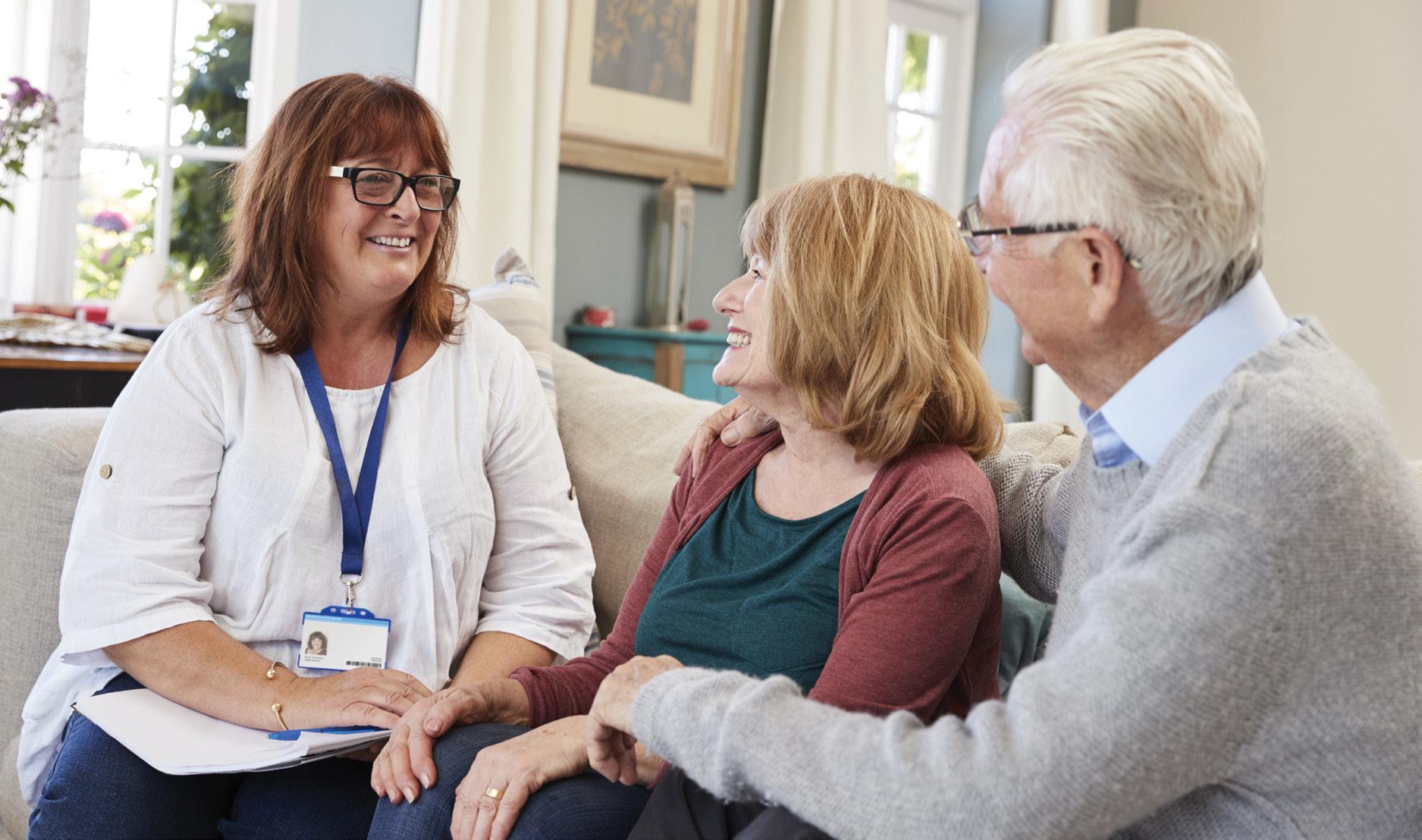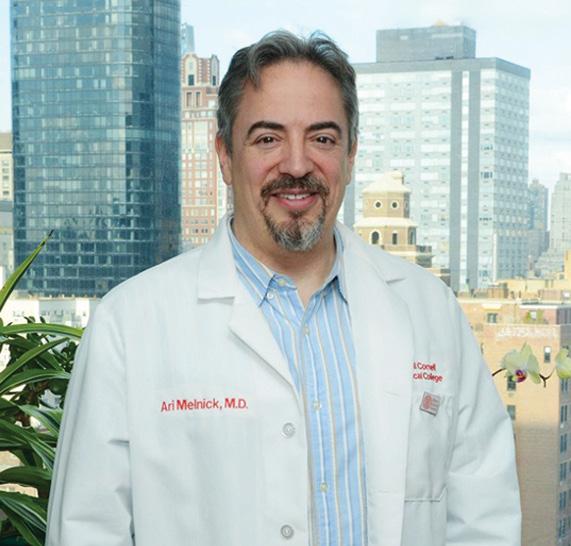
8 minute read
The Promise and Hope of Family
Nick Howe never expected a lymphoma diagnosis or pursuit of a family to lead him to find 10 half-siblings and participate in one of the first CAR T-cell therapy clinical trials.
At 28 years old, Nick Howe never imagined a morning cup of coffee with his mother would change his life forever. Howe, who hails from Nebraska, was explaining to his mother that starting their family had not been easy for him and his wife Rachel. “The conversation moved into a discussion of various reproductive treatments,” he says. “I told her I would rather adopt.”
His mother was shocked by his dismissal. “She asked me, ‘What if I were to tell you the reason why you and your sister are here today is because of a donor?’” adds Howe. Once Howe grasped onto the reality of what his mother had said, he walked her back to her office and immediately went home to tell his wife what had happened.
After a few agonizing moments, Rachel processed the news. “She told me knowing how hard my parents worked to bring me into her life made her love me even more,” says Howe. “I gave a huge sigh of relief. And honestly at that moment, everything made sense to me.”
Three years later, Howe, now 31, and his wife were still struggling to start their family. Howe also began to experience a variety of severe health issues, including liver and kidney failure, and the loss of 55 pounds within the span of a couple of months. “I was in immense pain, both physical and emotional, and was anything but my jovial self,” he says.

Nick Howe with his wife, Rachel, and their daughter, Julia
After some time in the hospital, he was finally diagnosed with diffuse large B-cell lymphoma (DLBCL) and was told to start treatment immediately.
DLBCL is an aggressive, or fast-growing, type of nonHodgkin lymphoma (NHL). DLBCL affects B-lymphocytes, which are one type of white blood cell. These lymphocytes make antibodies to fight infections and are an important part of the lymphatic system. DLBCL is the most common type of NHL worldwide, accounting for 18,000 newly diagnosed cases in the United States annually.
Presently, the most widely used treatment for DLBCL is the combination therapy known as R-CHOP (rituximab [Rituxan], cyclophosphamide [Cytoxan], doxorubicin [Adriamycin], vincristine [Oncovin], and prednisone). The R-CHOP regimen is usually given in 21-day cycles (once every 21 days) for an average of six cycles. However, the length and number of cycles given can vary based on the patient’s individual disease and health status. In certain cases, 14-day cycles may be used, and for limited-stage disease (stage I or II), 3-4 cycles may be used followed by radiation.
Before starting his first round of R-CHOP, Howe’s doctor asked if he and his wife were planning to start a family, because this treatment could potentially result in infertility. As many young people facing a lymphoma diagnosis must do, the Howes quickly needed to make several additional medical appointments in order to secure their chances of having a family in the future. “I couldn’t have done any of this without the unconditional support of my wife, who carried us both when I was unable to stand on my own,” says Howe.
Only hours into Howe’s first round of treatment, the Howes received a call from their fertility doctor telling them that they would be able to help them start a family. “I never cry, but at that moment I did,” says Howe. “We still might have a chance to become parents. It was exactly the news we needed to hear in order to get through that tough first night of chemo.”
Following that first night of chemotherapy, Howe’s journey was fraught with challenges and setbacks. He endured two more years of anti-cancer treatments, including chemotherapy, immunotherapy, multiple clinical trials and an autologous stem-cell transplant (a procedure in which stem cells are collected from the patient).
After his autologous stem-cell transplant failed, Howe relapsed in less than 100 days, and his doctors began preparing him to undergo an allogeneic stem-cell transplant. This treatment relied on Howe finding a donor who was a complete genetic match. There was also a possibility of developing various long- and short-term side effects. His doctors began testing his immediate family, including his sister, as possible stem cell donors. With none resulting in a complete match, Howe remembered his life-changing conversation with his mother three years ago. That memory quickly impacted his search for a donor. “Shortly after my conversation with my mother, I began a search for my halfsiblings,” he says. Through that search, he identified and connected with 10 half-siblings. One of them would be the person who Nick calls his “Hail Mary.”
Weeks prior to learning about his relapse, Howe connected with one of his siblings, a half-brother who happened to be a healthcare professional working at the same medical institution where Nick was being treated. Surprisingly, with little knowledge of one another or any real connection aside from sharing DNA, Howe and his half-brother quickly created an unbreakable bond and later learned that he was the match that could potentially save his life.
At the same time, an additional treatment called chimeric antigen receptor (CAR) T-cell therapy became available in the United States. CAR T-cell therapy is a treatment in which engineered molecules called chimeric antigen receptors (CARs) recognize and destroy antigens present on the surface of lymphoma cells. T-cells are first removed from the patient and then genetically modified to produce CARs. The genetically engineered CAR T-cells are grown in the laboratory until they number in the billions and are then infused back into the patient.
At the time of Howe’s relapse, CAR T-cell therapy was in the clinical trial phase, meaning that it was still being tested in people. Having participated unsuccessfully in clinical trials before, Howe was nervous about participating in another trial with this new therapy. Faced with the difficult decision between an allogeneic stem-cell transplant or CAR T-cell therapy, Howe decided to adopt the mindset of exploring the trial for the greater good. “I decided to adopt the mindset of being an astronaut,” he says. “Like an astronaut, I had an obligation to my fellow man to discover the unknown in hopes of finding something that would save not just my life, but also the lives of the lymphoma patients who would come after me.”

Nick Howe with daughter, Julia
Ultimately, Howe decided to undergo CAR T-cell therapy, wanting more than to just do well himself and defeat his lymphoma, but also to participate in a clinical trial so that all who followed would have a better chance at life. This was especially true since he would be only the fifth person in the world to be treated with this type of therapy as part of the clinical trial.
In the months leading up to the clinical trial, not knowing what the outcome would be, the Howes decided to live for today and take the next steps toward becoming parents. “There were risks involved, but there was also hope in family,” says Howe.
When the day came to begin CAR T-cell therapy, Howe spent seven days each in inpatient and outpatient observation, for side effects monitoring and data recording. He was shocked to learn he only experienced minor vertigo, “It all seemed too good to be true,” he says.
Three weeks after receiving treatment, he and his wife were elated to find out his treatment was a success and he was clear of any disease. Shortly after, they welcomed their daughter, Julia, into the world. He credits his strength through his journey to his wife, his mother, his siblings and to the promise of a family.
“People always ask me, ‘Nick, how should I interact with someone I care about who has cancer?’” he says. “My answer is simple: give them a future. Give them exploration and something to look forward to. We all need a future to survive for.”

QUESTIONS TO ASK ABOUT CLINICAL TRIALS
Have you ever wondered how treatments for lymphoma are developed? Clinical trials are research studies that involve people. Each study answers scientific questions and tries to find better ways to treat a disease. Clinical trials may also compare a new treatment to a treatment that is already available. Clinical trials are available for most types of lymphoma at every stage of disease. If you would like to learn more, or if a clinical study is being recommended by your healthcare team, below are some general questions you can ask to learn more:
1. WHAT IS THE PURPOSE OF THIS CLINICAL TRIAL?
2. WHY ARE YOU RECOMMENDING THIS CLINICAL TRIAL TO ME?
3. WHO IS SPONSORING THIS TRIAL (THE NATIONAL CANCER INSTITUTE, A CANCER CENTER, A PHARMACEUTICAL/BIOTECHNOLOGY COMPANY)?
4. WHO HAS REVIEWED AND APPROVED THIS CLINICAL TRIAL?
5. DOES THIS CLINICAL TRIAL INCLUDE THE USE OF A PLACEBO (SUGAR PILL)?
6. HOW LONG WILL THE STUDY LAST? WHERE WILL IT TAKE PLACE?
7. WHAT ARE THE RISKS INVOLVED?
8. WHAT ARE MY RESPONSIBILITIES DURING THE CLINICAL TRIAL?
9. WHAT KINDS OF TESTS, PROCEDURES OR TREATMENTS WILL BE PERFORMED? HOW MANY AND HOW OFTEN?
10. WHAT ARE THE SIDE EFFECTS?
11. WILL I BE ABLE TO SEE MY OWN DOCTOR DURING THE CLINICAL TRIAL?
12. WHAT COSTS WILL I BE RESPONSIBLE FOR?





